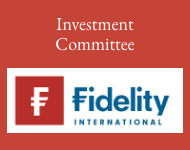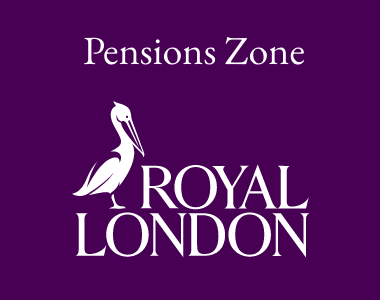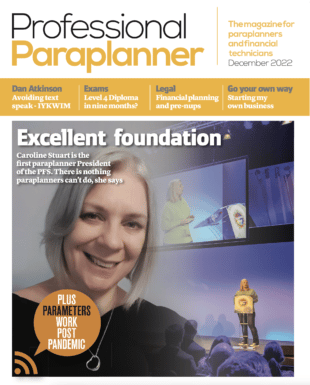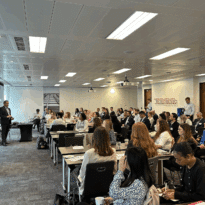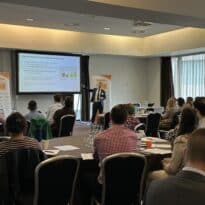Investors should reduce their exposure to risk as the tariffs brought in by President Trump on his so-called ‘Liberation Day’ have significantly changed the short-term outlook for markets, commentators are warning.
On Wednesday 2 April, the Trump administration introduced a baseline tariff of 10% on nearly all goods imported to the US, with 20% tariffs imposed on imports from the EU, and much steeper duties imposed on countries in Asia with China facing 34% duties. There will also be 25% tariffs on foreign-made cars sold in the US.
“Trump’s sweeping tariffs announcement was worse than feared by the market because of its totality, but it does underpin the core of his trade agenda: targeting a reduction in US goods-based trade deficits with other countries through a combination of trade renegotiation or building up manufacturing supply chains in the US,” said Richard de Lisle, manager of the VT De Lisle America Fund. “The problem is that the initial effect is price rises for US consumers, which will hurt demand and weaken the US economic outlook.”
The consensus from commentators is that the implications for economic growth and inflation for both the US and the trading world as whole could be substantial.
Luca Paolini, Chief Strategist, Pictet Asset Management highlighted the company’s economists’ worries that tariffs could reduce US GDP growth in 2025 by as much as 2%, while adding up to 3% to US inflation. “This alone may be enough to push the US into recession. While there is scope for negotiation and de-escalation, we now rate the probability of a US recession at 50% or higher — significantly more than we anticipated just a few months ago,” Paolini said. “Other countries, particularly smaller, trade-reliant Asian economies, will likely be hit even harder.
“If fully implemented, the tariffs could cut US corporate earnings by some 15% and compress US stocks’ price/earnings multiples by a further 10%. A fall in real interest rates may offer only partial relief. In a recession scenario, we could see the S&P 500 Index dropping to around 4,500. Given the heightened risk of a US recession, we believe it is prudent to reduce risk,” he added.
“That said, equity valuations are less stretched than they were in late 2024 and investor sentiment is already quite negative, which should help limit downside risk.”
Oliver Blackbourne, Portfolio Manager on the Multi-Asset team at Janus Henderson Investors, pointed out that even the US administration was willing to admit that tariffs are unlikely to be good for the economy in the near term.
“With recession probabilities already rising before Liberation Day and the applied rates being higher than expected, expect to see consensus expectations price in an even greater probability of a US economic contraction, as well as increased fears for elsewhere,” Blackbourne said.
“Within the US, the fear is that inflation is forced higher as suppliers refuse to cut costs and retailers are forced to push up prices. A weaker dollar has not performed the shocker absorber function that many had assumed a few months ago. Incomes are already being squeezed once adjusting for inflation and the fear is that the tariffs act as a “tax” that leads to a contraction in real consumer spending, the backbone of the US economy.
“Consumer confidence has already ebbed significantly and companies have shown signs of losing confidence. With many other major economies benefitting significantly from exports to the US, a slowdown in trade could be painful around the world.”
Further concern was raised that the tariffs announced on Wednesday do not represent ‘peak tariffs’. “We still think additional sector specific tariffs are coming, including on semiconductors, copper, lumber and pharmaceuticals, said Paul Diggle, Chief Economist, at Aberdeen.
“There is still scope for US tariffs to eventually settle at a lower level, and this is probably still a widespread expectation,” Diggle said.
“The net impact on the US economy will almost certainly be stagflationary, although the magnitudes of the price level increase and GDP hit are hard to pin down.
“The shock to growth and inflation is sensitive to whether tariffs are perceived as temporary or permanent, the scope for firms to absorb price rises in their margins, currency moves, and how financial markets react, among other things.”
Mike O’Sullivan, Chief Economist at private equity provider Moonfare, commented: “From the point of view of textbook economics, this level and scope of tariffs is puzzlingly bad for the US economy, and many investors will question the rationale and possibly the competence of the White House policy team.”
He added: “A more positive scenario is that the high level of tariffs is the first step in a grand ‘deal’, or negotiating process. The difficulty with this view is that diplomatic relations between the US and other regions are already strained, and the credibility of the US is now in question.
“From the point of view of corporates, a minor positive is that the rate outlook is changing to a path of lower rates in 2025 (pricing in a demand shock), but the concern is that the extreme level of uncertainty will cause companies and private investors to put investment plans on hold. We note that the Fed chair speaks publicly on Friday, and the response of central bankers to this potential shock is another open question.
“Equally, capital market activity may also see a hiatus until there is clarity on the trade outlook. Additionally, given the premise that the application of tariffs is to help US firms, this policy move creates a very difficult environment for them.
Aberdeen’s Diggle said that the Federal Reserve “faces a difficult trade-off.
“Policy makers have previously talked about tariffs having only a ‘transitory’ impact on US inflation, but given the recent sharp increase in inflation expectations it may be difficult for the Fed to look-through this impact,” he said.
Main image: marc-wieland-trnTvywx2Rg-unsplash




